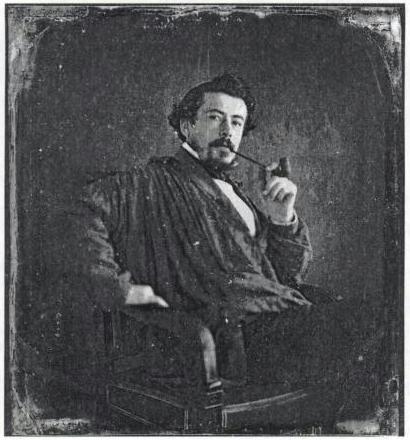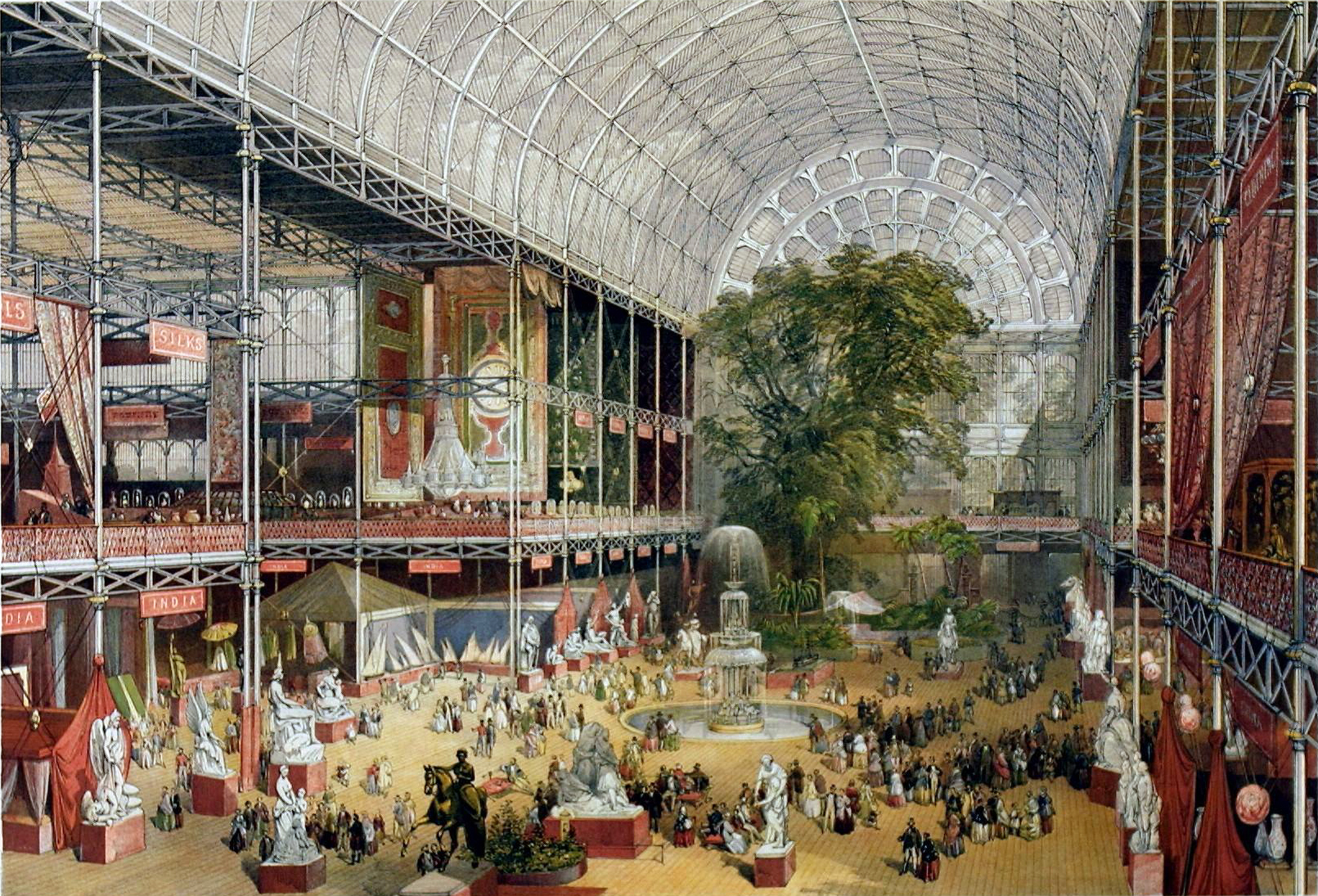|
Claude-Marie Ferrier
Claude-Marie Ferrier (1811–1889) was an early French photographer, known for his portraits of prominent French people, his work at the London Great Exhibition, and for his production of stereoviews to be viewed through the stereoscope invented by David Brewster. Biography Ferrier was born in 1811 in Lyon, France. He began his career as an artist, studying at the ''École nationale supérieure des beaux-arts de Lyon''. He then became interested in photography and began to experiment with the new medium, initially becoming known for his portraits of notable French people. By 1851 he had settled in Paris and in that year he exhibited at the Great Exhibition in London. His work so impressed the organisers that, together with the English photographer, Hugh Owen, he was asked to make photographs of the exhibits. More than 140 bound sets of reports and accompanying photographs, known as the ''Exhibition of the Works of Industry of All Nations, 1851: Reports by the Juries on the Subj ... [...More Info...] [...Related Items...] OR: [Wikipedia] [Google] [Baidu] |
Lyon
Lyon,, ; Occitan: ''Lion'', hist. ''Lionés'' also spelled in English as Lyons, is the third-largest city and second-largest metropolitan area of France. It is located at the confluence of the rivers Rhône and Saône, to the northwest of the French Alps, southeast of Paris, north of Marseille, southwest of Geneva, northeast of Saint-Étienne. The City of Lyon proper had a population of 522,969 in 2019 within its small municipal territory of , but together with its suburbs and exurbs the Lyon metropolitan area had a population of 2,280,845 that same year, the second most populated in France. Lyon and 58 suburban municipalities have formed since 2015 the Lyon Metropolis, Metropolis of Lyon, a directly elected metropolitan authority now in charge of most urban issues, with a population of 1,411,571 in 2019. Lyon is the Prefectures in France, prefecture of the Auvergne-Rhône-Alpes Regions of France, region and seat of the Departmental council (France), Departmental Coun ... [...More Info...] [...Related Items...] OR: [Wikipedia] [Google] [Baidu] |
19th-century French Photographers
The 19th (nineteenth) century began on 1 January 1801 ( MDCCCI), and ended on 31 December 1900 ( MCM). The 19th century was the ninth century of the 2nd millennium. The 19th century was characterized by vast social upheaval. Slavery was abolished in much of Europe and the Americas. The First Industrial Revolution, though it began in the late 18th century, expanding beyond its British homeland for the first time during this century, particularly remaking the economies and societies of the Low Countries, the Rhineland, Northern Italy, and the Northeastern United States. A few decades later, the Second Industrial Revolution led to ever more massive urbanization and much higher levels of productivity, profit, and prosperity, a pattern that continued into the 20th century. The Islamic gunpowder empires fell into decline and European imperialism brought much of South Asia, Southeast Asia, and almost all of Africa under colonial rule. It was also marked by the collapse of the lar ... [...More Info...] [...Related Items...] OR: [Wikipedia] [Google] [Baidu] |
Pioneers Of Photography
Pioneer commonly refers to a settler who migrates to previously uninhabited or sparsely inhabited land. In the United States pioneer commonly refers to an American pioneer, a person in American history who migrated west to join in settling and developing new areas. Pioneer, The Pioneer, or pioneering may also refer to: Companies and organizations *Pioneer Aerospace Corporation * Pioneer Chicken, an American fast-food restaurant chain * Pioneer Club Las Vegas, a casino in Las Vegas, Nevada, U.S. *Pioneer Corporation, a Japanese electronics manufacturer * Pioneer Energy, a Canadian gas station chain * Pioneer Entertainment, a Japanese anime company * Pioneer Hi-Bred, a U.S.-based agriculture company * Pioneer Hotel & Gambling Hall, Laughlin, Nevada, U.S. *Pioneer Instrument Company, an American aeronautical instrument manufacturer *Pioneer movement, a communist youth organization * Pioneer Natural Resources, an energy company in Texas, U.S. * Pioneer Pictures, a former American fil ... [...More Info...] [...Related Items...] OR: [Wikipedia] [Google] [Baidu] |
19th-century French Inventors
The 19th (nineteenth) century began on 1 January 1801 ( MDCCCI), and ended on 31 December 1900 ( MCM). The 19th century was the ninth century of the 2nd millennium. The 19th century was characterized by vast social upheaval. Slavery was abolished in much of Europe and the Americas. The First Industrial Revolution, though it began in the late 18th century, expanding beyond its British homeland for the first time during this century, particularly remaking the economies and societies of the Low Countries, the Rhineland, Northern Italy, and the Northeastern United States. A few decades later, the Second Industrial Revolution led to ever more massive urbanization and much higher levels of productivity, profit, and prosperity, a pattern that continued into the 20th century. The Islamic gunpowder empires fell into decline and European imperialism brought much of South Asia, Southeast Asia, and almost all of Africa under colonial rule. It was also marked by the collapse of the la ... [...More Info...] [...Related Items...] OR: [Wikipedia] [Google] [Baidu] |
Léon & Lévy
Léon & Lévy was a French printer and a photograph editing company located in Paris. It was founded in 1864 and specialized in stereoscopic views and picture postcards of locations in Europe, Asia, Africa and the Americas. The trade mark of the enterprise was ″L.L." ("LL").Paul-Antoine Briat, Alexandre de Metz (owner)''Léon et Levy''/ref> The firm was one of the most important postcard editors in France. History ''Léon & Lévy'' was founded in 1864 by Isaac and his son-in-law Moyse Léon. Isaac was also known as Georges Lévy at that time (to increase profits, he is known as ''J. Lévy'', 1833-1913) . When Lévy's two sons, Abraham Lucien Lévy and Gaspard Ernest Lévy, took over the firm in 1895, the company was renamed Lévy Fils et Cie. Around 1920, the firm was acquired by the printer Émile Crété (who also acquired the firm of Neurdein Frères), and the new combined company was known as Lévy et Neurdein Réunis. Throughout the various changes in the firm, the lo ... [...More Info...] [...Related Items...] OR: [Wikipedia] [Google] [Baidu] |
Jules Duboscq
Louis Jules Duboscq (March 5, 1817 – September 24, 1886) was a French instrument maker, inventor, and pioneering photographer. He was known in his time, and is remembered today, for the high quality of his optical instruments. Life and work Duboscq was born at Seine-et-Oise in 1817. He was apprenticed in 1834 to Jean-Baptiste-François Soleil (1798–1878), a prominent instrument maker, and he married one of Soleil's daughters, Rosalie Jeanne Josephine, in 1839. Among the instruments Duboscq built were a stereoscope (marketing David Brewster's lenticular stereoscope), a colorimeter, a polarimeter, a heliostat A heliostat (from ''helios'', the Greek word for ''sun'', and ''stat'', as in stationary) is a device that includes a mirror, usually a plane mirror, which turns so as to keep reflecting sunlight toward a predetermined target, compensating f ... and a saccharimeter. See also * Colorimetry (chemical method) References Further reading * * ... [...More Info...] [...Related Items...] OR: [Wikipedia] [Google] [Baidu] |
Exposition Universelle (1855)
The Exposition Universelle of 1855 was an International Exhibition held on the Champs-Élysées in Paris from 15 May to 15 November 1855. Its full official title was the Exposition Universelle des produits de l'Agriculture, de l'Industrie et des Beaux-Arts de Paris 1855. Today the exposition's sole physical remnant is the Théâtre du Rond-Point des Champs-Élysées designed by architect Gabriel Davioud, which originally housed the Panorama National. History The exposition was a major event in France, then newly under the reign of Emperor Napoleon III. It followed London's Great Exhibition of 1851 and attempted to surpass that fair's Crystal Palace with its own Palais de l'Industrie. The arts displayed were shown in a separate pavilion on Avenue Montaigne. There were works from artists from 29 countries, including French artists François Rude, Ingres, Delacroix and Henri Lehmann, and British artists William Holman Hunt and John Everett Millais. However, Gustave Courbet ... [...More Info...] [...Related Items...] OR: [Wikipedia] [Google] [Baidu] |
Great Exhibition
The Great Exhibition of the Works of Industry of All Nations, also known as the Great Exhibition or the Crystal Palace Exhibition (in reference to the temporary structure in which it was held), was an international exhibition which took place in Hyde Park, London, from 1 May to 15 October, 1851. It was the first in a series of World's Fairs, exhibitions of culture and industry that became popular in the 19th century. The event was organised by Henry Cole and Prince Albert, husband of Victoria, Queen of the United Kingdom. Famous people of the time attended the Great Exhibition, including Charles Darwin, Karl Marx, Michael Faraday (who assisted with the planning and judging of exhibits), Samuel Colt, members of the Orléanist Royal Family and the writers Charlotte Brontë, Charles Dickens, Lewis Carroll, George Eliot, Alfred Tennyson and William Makepeace Thackeray. The opening music, under the superintendence of William Sterndale Bennett, was directed by Sir ... [...More Info...] [...Related Items...] OR: [Wikipedia] [Google] [Baidu] |
British Museum
The British Museum is a public museum dedicated to human history, art and culture located in the Bloomsbury area of London. Its permanent collection of eight million works is among the largest and most comprehensive in existence. It documents the story of human culture from its beginnings to the present.Among the national museums in London, sculpture and decorative and applied art are in the Victoria and Albert Museum; the British Museum houses earlier art, non-Western art, prints and drawings. The National Gallery holds the national collection of Western European art to about 1900, while art of the 20th century on is at Tate Modern. Tate Britain holds British Art from 1500 onwards. Books, manuscripts and many works on paper are in the British Library. There are significant overlaps between the coverage of the various collections. The British Museum was the first public national museum to cover all fields of knowledge. The museum was established in 1753, largely ... [...More Info...] [...Related Items...] OR: [Wikipedia] [Google] [Baidu] |
Queen Victoria
Victoria (Alexandrina Victoria; 24 May 1819 – 22 January 1901) was Queen of the United Kingdom of Great Britain and Ireland from 20 June 1837 until her death in 1901. Her reign of 63 years and 216 days was longer than that of any previous British monarch and is known as the Victorian era. It was a period of industrial, political, scientific, and military change within the United Kingdom, and was marked by a great expansion of the British Empire. In 1876, the British Parliament voted to grant her the additional title of Empress of India. Victoria was the daughter of Prince Edward, Duke of Kent and Strathearn (the fourth son of King George III), and Princess Victoria of Saxe-Coburg-Saalfeld. After the deaths of her father and grandfather in 1820, she was raised under close supervision by her mother and her comptroller, John Conroy. She inherited the throne aged 18 after her father's three elder brothers died without surviving legitimate issue. Victoria, a constitu ... [...More Info...] [...Related Items...] OR: [Wikipedia] [Google] [Baidu] |
.jpg)






